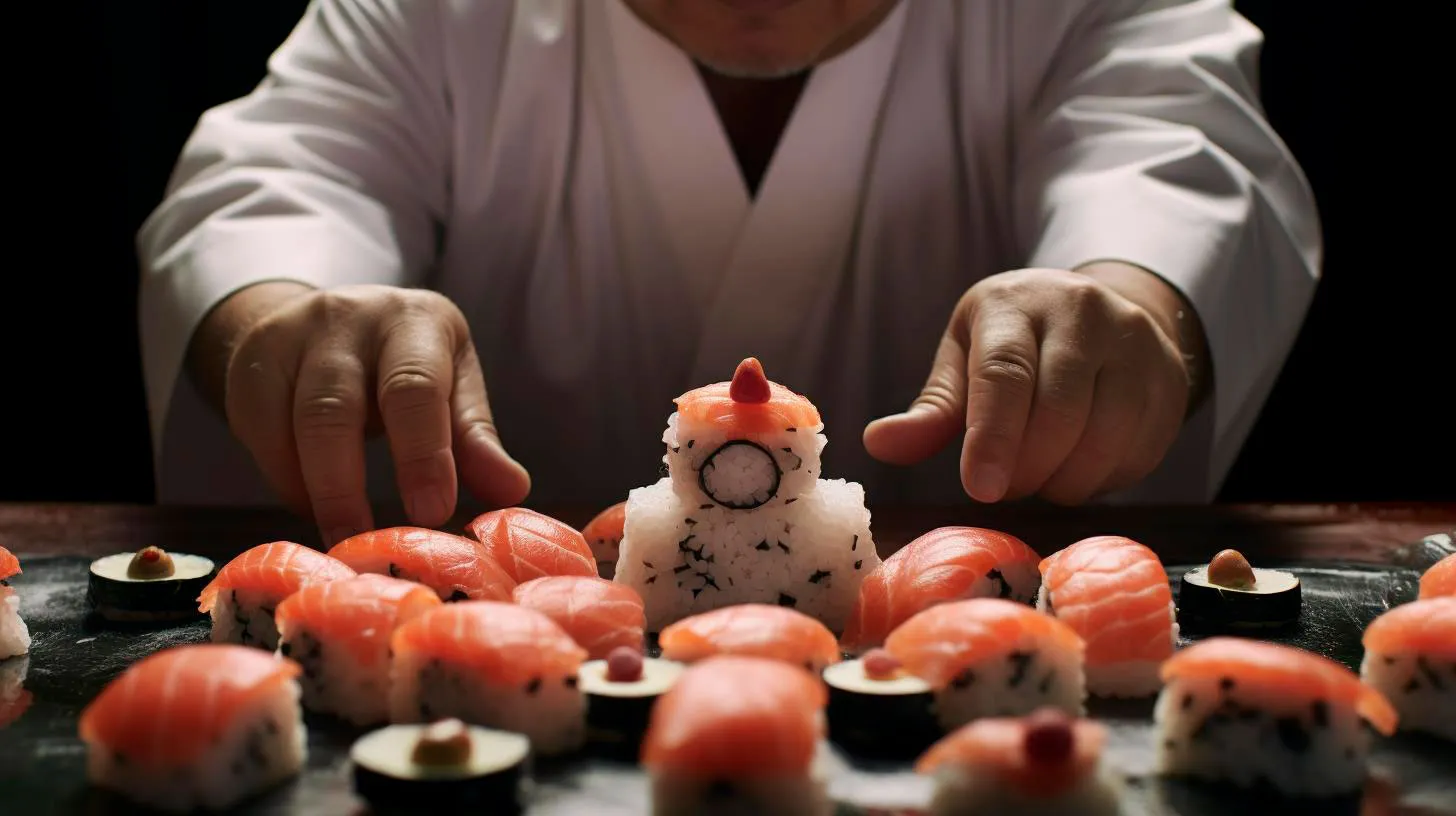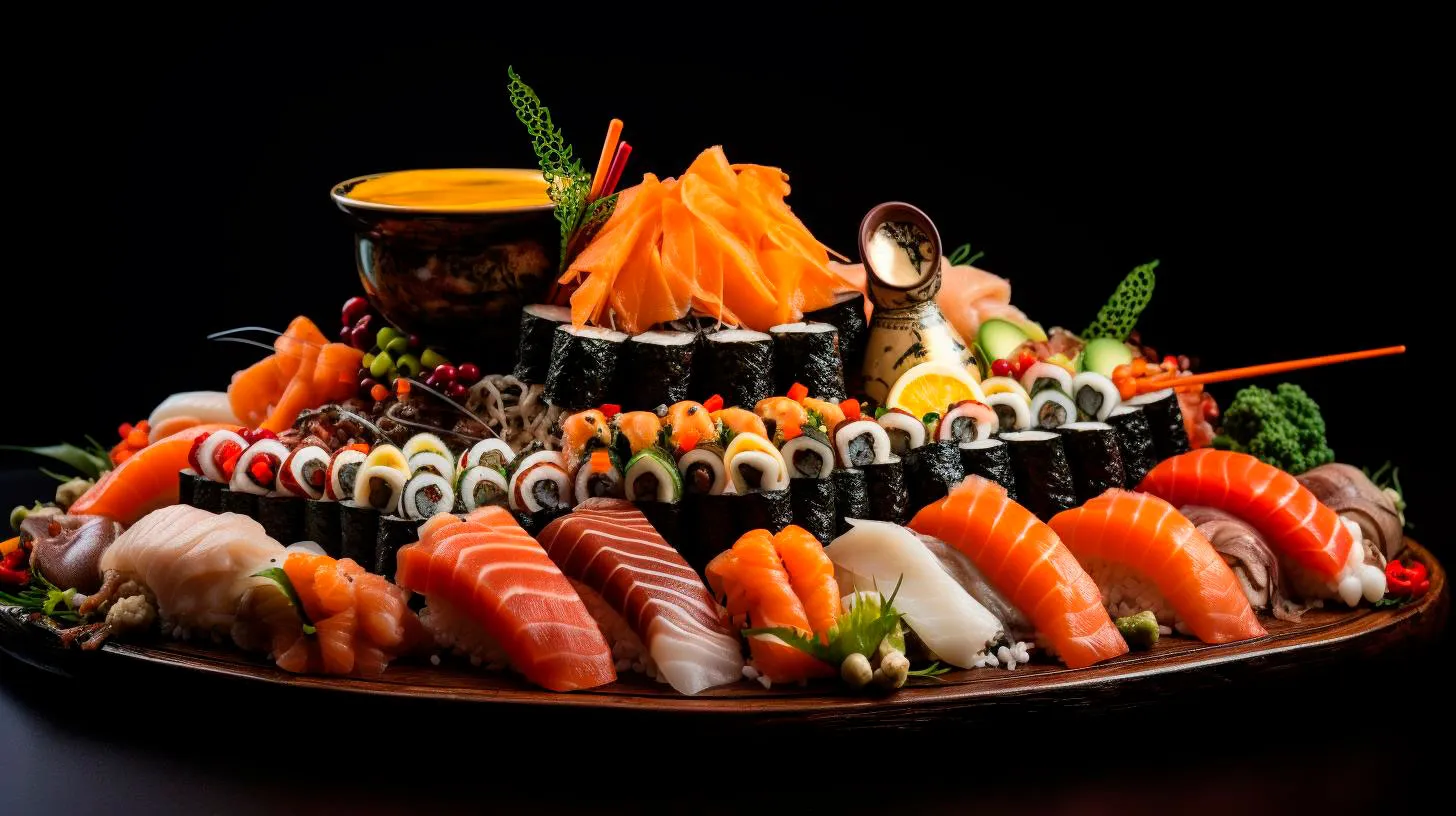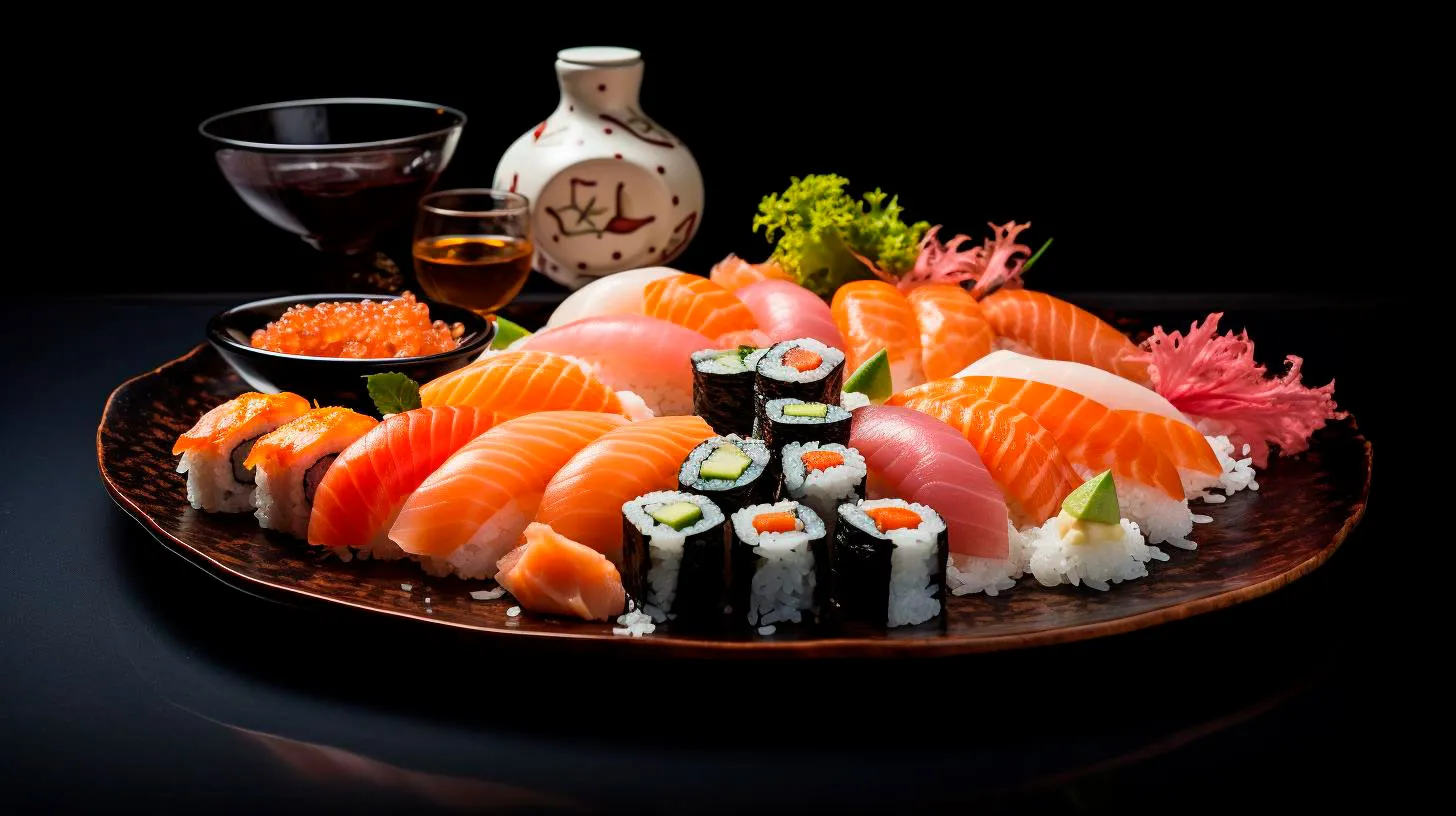Tea as Meditation: How Japanese Tea Rituals Bring Tranquility to Everyday Life
In Japan, tea ceremonies are not only a means of enjoying a warm beverage but also a revered tradition that brings tranquility and mindfulness to everyday life. In this article, we will explore how Japanese tea rituals can serve as a form of meditation, offering a path to serenity and inner peace.
The Essence of Japanese Tea Rituals
Japanese tea rituals, commonly known as Chanoyu or Sadō, have their roots in Zen Buddhism and have been practiced for centuries. These rituals are not limited to serving and drinking tea but encompass a complete and immersive experience, carefully crafted to promote a sense of calmness and mindfulness. In this highly choreographed ceremony, each movement, gesture, and even the placement of objects is meticulously defined.
One of the key aspects of Japanese tea rituals is the emphasis on being fully present in the moment. The act of preparing and serving tea becomes a form of meditation, allowing the participants to slow down, focus their attention, and appreciate the beauty of simplicity. By engaging all the senses, individuals can achieve a state of heightened awareness and tranquility.
The Meditative Process of Tea Preparation
Japanese tea ceremonies involve a series of specific steps, from the preparation of the tea room to the presentation of the tea itself. Let’s dive into the meditative process of tea preparation:
- Cleansing: Before the ceremony begins, participants engage in a cleansing ritual to purify their bodies and minds. This cleansing practice sets the stage for a fresh start and a clear state of mind.
- Equipment: The utensils used in Japanese tea ceremonies are carefully selected and revered for their beauty and craftsmanship. Each object has its purpose, from the tea scoop to the tea bowl, contributing to the overall aesthetic and developing a connection between the host and the guests.
- Precision and Focus: The preparation of the tea requires utmost precision and focus. Every movement, from measuring the tea leaves to whisking the matcha, is deliberate and purposeful. By focusing on each step of the process, participants cultivate mindfulness and concentration.
- Ritual of Serving: When serving tea to the guests, the host maintains a graceful and respectful demeanor. This act of humility and selflessness fosters a sense of connection and harmony among the participants. The guests, in turn, express their gratitude and appreciation for the tea by following certain prescribed gestures.
- Mindful Consumption: Each sip of tea is savored and appreciated in the presence of others. It is not just about drinking tea; it is about creating a communal experience, where individuals can connect and find tranquility in the simplicity of the moment.
The Benefits of Tea Rituals in Daily Life
Engaging in Japanese tea rituals offers numerous benefits that extend beyond the tea ceremony itself. Here are some key takeaways and advantages:
- Promotes Mindfulness: Tea ceremonies provide a space for individuals to disconnect from their daily stressors and to focus on the present moment. This mindfulness practice can reduce anxiety and enhance overall well-being.
- Encourages Gratitude: The act of serving and receiving tea promotes an attitude of gratitude. By expressing appreciation for the tea, the host, and the guests, individuals cultivate a sense of gratitude that can positively impact their daily lives.
- Cultivates Patience: Tea ceremonies require patience and attention to detail. By slowing down and embracing each step of the process, participants develop patience, which translates into other aspects of life.
- Stimulates Senses: Engaging all the senses during a tea ceremony – from the aroma of the tea to the sound of whisking – heightens sensory awareness. This heightened perception allows individuals to experience the beauty of everyday life.
- Brings People Together: Tea ceremonies are a communal experience, fostering connections and deepening relationships. By gathering around a shared ritual, individuals can strengthen bonds and create lasting memories.
Statistics on Tea Consumption and its Influence
As the popularity of tea continues to grow, it is worth taking a look at some industry statistics:
- According to Statista, the global tea market is expected to reach a value of USD 67 billion by 2025.
- In the United States alone, tea sales have increased by 15% in the past five years, with over 84 billion servings consumed annually (Tea Association of the USA).
- A study published in the Journal of Physiological Anthropology found that participants who regularly drank green tea reported lower levels of stress and higher levels of relaxation compared to non-tea drinkers.
Tea, especially when experienced through the lens of Japanese tea rituals, has the power to bring peace and serenity to our everyday lives. By embracing the meditative aspects of tea ceremonies, individuals can cultivate mindfulness, promote gratitude, and establish connections with others. So, why not take a moment today to savor a cup of tea and experience the tranquility it can bring?
The Art of Japanese Tea Ceremony: Cultivating Serenity amidst Chaos
In a world full of chaos and distractions, the Japanese tea ceremony offers a much-needed respite, allowing participants to find serenity and connect with themselves on a deeper level.
The Origins of Japanese Tea Ceremony
The origins of Japanese tea ceremony, or “chanoyu,” can be traced back to the 9th century when the first tea plants were brought to Japan from China. However, it wasn’t until the 15th and 16th centuries that the ritual evolved into its current form under the guidance of tea masters like Sen no Rikyu.
Rikyu, considered the father of Japanese tea ceremony, emphasized the importance of simplicity, humility, and mindfulness. He believed that the act of making and serving tea should be a meditative practice, where every movement and gesture is infused with intention and grace. These principles continue to be the foundation of Japanese tea ceremony today.
The Ritual and Its Components
The Japanese tea ceremony involves a meticulously choreographed series of steps that are meant to create a serene and contemplative atmosphere. Here are the key components:
- Preparation: The tea room, known as a “chashitsu,” is designed to be minimalistic and serene. Before the ceremony, the host meticulously cleans the tearoom, arranges the necessary utensils, and prepares the powdered green tea known as “matcha.”
- Entrance: Guests remove their shoes before entering the tea room, symbolizing leaving the outside world behind and entering a sacred space.
- Wagashi: Before starting the tea service, guests are typically served traditional Japanese sweets called “wagashi” to cleanse the palate.
- Tea Preparation: With great precision, the host prepares the tea by whisking the matcha with hot water in a bowl using a bamboo whisk. The process is not only about making tea but also an art in itself.
- Serving and Drinking: The host serves the tea to each guest individually, with the cup being rotated before it’s taken by the guest as a sign of respect.
- Silent Appreciation: After sipping the tea, guests take a moment to appreciate the surroundings, the tea, and the shared experience.
The Significance and Benefits
The Japanese tea ceremony holds deep cultural significance and offers numerous benefits beyond the experience itself.
Key Takeaways and Advantages:
- Mindfulness and Meditation: The tea ceremony encourages participants to be fully present in the moment, focusing on each movement and every sip of tea. It helps cultivate mindfulness and promotes a sense of inner peace.
- Simplicity and Minimalism: The emphasis on simplicity and minimalism in both the tea room’s design and the tea-making process reflects the Japanese philosophy of finding beauty in simplicity. This mindset can be applied to various aspects of life, bringing a sense of clarity and tranquility.
- Community and Connection: The tea ceremony is often practiced in small groups, fostering a sense of community and connection among participants. It provides an opportunity to slow down, engage in meaningful conversations, and deepen relationships.
- Cultural Appreciation: Participating in a tea ceremony allows individuals to gain a deeper understanding and appreciation for Japanese culture and traditions. It provides insights into the values and aesthetics that have shaped Japanese society for centuries.
Relevance in the Modern World
Despite its ancient roots, the Japanese tea ceremony remains relevant and continues to captivate people around the globe. In a fast-paced and chaotic world, this time-honored tradition offers an escape, a moment to find peace amidst the chaos.
The profound impact of the tea ceremony has been recognized beyond Japan. The practice of mindfulness, which is at the core of the tea ceremony, has gained popularity in the Western world as a way to combat stress and promote well-being. The ritual of making and enjoying tea provides a tangible way to incorporate mindfulness into daily life, even outside of the traditional tea ceremony setting.
Industry Statistics:
- According to a research study conducted in 2020, interest in mindfulness and meditation has increased by 70% over the past decade.
- In 2019, the global tea market was valued at over $52 billion, with an estimated annual growth rate of 5.5%.
- Japan is renowned for its tea production, being the 8th largest tea exporter in the world.
The art of Japanese tea ceremony offers a timeless way to find serenity and cultivate inner peace. Steeped in centuries of tradition and infused with Zen philosophy, it serves as a reminder of the importance of mindfulness, simplicity, and connection in our fast-paced modern lives. So, take a moment, prepare a cup of tea, and let the chaos melt away as you embark on a journey of tranquility – the art of Japanese tea ceremony awaits.
The Connection Between Japanese Tea Culture and Emotional Wellbeing
In this article, we will explore the deep-rooted connection between Japanese tea culture and emotional wellbeing, and how incorporating these practices into your daily routine can have a positive impact on your overall mental health.
The Ritual of Tea Preparation
One of the key aspects of Japanese tea culture is the elaborate ritual of tea preparation. Known as “chanoyu” or the “Way of Tea,” this ritual involves careful attention to every detail, from the selection of the tea leaves to the precise temperature of the water. This slow and deliberate process encourages mindfulness and allows tea drinkers to fully immerse themselves in the present moment.
The ritual of tea preparation emphasizes the importance of being present and fully engaged in the tasks at hand, which is a fundamental principle of mindfulness. By focusing on the preparation process, individuals can cultivate a sense of calm and achieve a state of mental clarity.
Key takeaway: The ritual of tea preparation encourages mindfulness and helps individuals develop a greater sense of presence and mental clarity.
The Role of Tea Ceremonies
Tea ceremonies, or “chado,” hold a special place in Japanese culture. These ceremonies are not just about drinking tea but are rather a form of art and a means of connecting with others. Participants gather in a serene setting, such as a traditional tea room, where they become fully absorbed in the experience.
The tea ceremony is characterized by a specific set of movements and gestures, each contributing to the overall aesthetic and ambiance of the event. It is a quiet and contemplative affair, promoting a sense of tranquility and fostering deep connections between those involved.
Key takeaway: Tea ceremonies provide an opportunity for individuals to disconnect from the fast-paced world and establish meaningful relationships through shared experiences.
The Power of Matcha
Matcha, a finely ground green tea powder, holds a special place in Japanese tea culture. Unlike regular brewed tea, matcha involves consuming the entire tea leaf, resulting in a more concentrated and powerful brew. This vibrant green tea is rich in antioxidants, amino acids, and other beneficial compounds, making it a popular choice for those seeking a healthier lifestyle.
In addition to its health benefits, matcha also contains L-theanine, an amino acid known for its calming properties. L-theanine promotes relaxation and helps reduce anxiety, providing individuals with a sense of calm focus.
Key takeaway: Matcha, with its numerous health benefits and calming properties, can be a valuable addition to your daily wellness routine.
Creating a Sense of Community
Japanese tea culture places a strong emphasis on creating a sense of community and fostering meaningful connections. Tea gatherings, known as “chakai,” bring people together to enjoy the tranquility of tea while engaging in meaningful conversations and appreciating art.
These gatherings encourage camaraderie, allowing individuals to share their thoughts and experiences while supporting one another. The act of coming together and sharing tea creates a sense of belonging and social connection, which plays a vital role in emotional wellbeing.
Key takeaway: Engaging in tea gatherings can foster a sense of community, enhance social connections, and contribute to overall emotional wellbeing.
Incorporating Japanese Tea Culture Into Your Routine
Now that we understand the countless benefits of Japanese tea culture, let’s explore how you can incorporate these practices into your daily routine:
- Mindful tea preparation: Set aside time each day to prepare tea mindfully, paying attention to every step of the process.
- Tea ceremonies: Host or attend a tea ceremony to experience the tranquility and connection it offers.
- Explore matcha: Try incorporating matcha tea into your diet to reap its health benefits and enjoy its calming effects.
- Tea gatherings: Organize tea gatherings with friends or join local tea communities to foster connections and create a sense of social belonging.
In conclusion, Japanese tea culture provides a holistic approach to emotional wellbeing. The rituals of tea preparation, the tranquility of tea ceremonies, the power of matcha, and the sense of community created through tea gatherings all contribute to a more balanced and fulfilled life. By integrating these practices into your routine, you can cultivate a greater sense of mindfulness and find inner calm in today’s fast-paced world.



